Related Research Articles
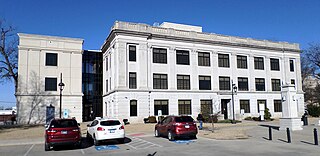
Pontotoc County is in the south central part of Oklahoma. As of the 2020 census, the population was 38,065. Its county seat is Ada. The county was created at statehood from part of the Chickasaw Nation in Indian Territory. It was named for a historic Chickasaw tribal area in Mississippi. According to the Encyclopedia of Oklahoma History and Culture, Pontotoc is usually translated "cattail prairie" or "land of hanging grapes."
Ada is a city in and the county seat of Pontotoc County, Oklahoma, United States. The population was 16,481 at the 2020 United States Census. The city was named for Ada Reed, the daughter of an early settler, and was incorporated in 1901. Ada is home to East Central University, and is the headquarters of the Chickasaw Nation. Ada is an Oklahoma Main Street City, an Oklahoma Certified City, and a Tree City USA member.

Purcell is a city in and the county seat of McClain County, Oklahoma, United States. As of the 2020 census, the city population was 6,651, a 13% increase from 2010.
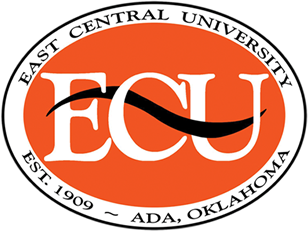
East Central University is a public university in Ada, Oklahoma. It is part of Oklahoma's Regional University System. Beyond its flagship campus in Ada, the university has courses available in McAlester, Shawnee, and Durant, as well as online courses. Founded as East Central State Normal School in 1909, its present name was adopted in 1985. Some of its more prominent alumni include former Microsoft COO B. Kevin Turner, Modernist painter Leon Polk Smith, former NFL player Mark Gastineau, past governors Robert S. Kerr and George Nigh, former U.S. Representative Lyle Boren, Oklahoma Supreme Court Justice Tom Colbert, and U.S. Army General James D. Thurman.

Albert Ernest Doyle was a prolific architect in the U.S. states of Oregon and Washington. He is most often credited for his works as A.E. Doyle. He opened his own architectural practice in 1907. From 1908 to 1914, he partnered with William B. Patterson, and their firm was known as Doyle & Patterson.

John Galen Howard was an American architect and educator who began his career in New York before moving to California. He was the principal architect at in several firms in both states and employed Julia Morgan early in her architectural career.
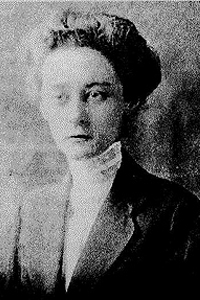
Leila Ross Wilburn (1885–1967) was an early 20th-century architect, one of the first women in Georgia to enter that profession.

The Sugg Clinic is considered an outstanding example of the Streamline Moderne architectural style. The building, which is listed in the National Register of Historic Places, is located at 100 E 13th Street in Ada, Oklahoma. Opened in 1947, it was called "one of the best equipped clinics in the Southwest." Architect Albert S. Ross designed it to fulfill Dr. Alfred R. Sugg's dream of a large, modern clinic to serve the growing city. The Sugg Clinic features smooth tile walls, curved corners, glass block windows, and brushed aluminum trim. The clinic closed in 1980. After a period of vacancy, it was later restored as an office building.

The Ada Arts and Heritage Center is a Colonial Revival styled building located at 400 South Rennie Street in Ada, Oklahoma. The building was listed on the National Register of Historic Places as Ada Public Library in 1989. The building was built in 1939 to serve as the public library of Ada. In 1981, having outgrown this original building, the Ada Public Library moved to its current location at 12th and Rennie.

The Oklahoma State Department of Education is the state education agency of the State of Oklahoma charged with determining the policies and directing the administration and supervision of the public school system of Oklahoma. The State Board of Education, the governing body of the Department, is composed of the Oklahoma State Superintendent of Public Instruction and six members appointed by the Governor of Oklahoma with the approval of the Oklahoma Senate. The State Superintendent, in addition to serving as chair of the Board, serves as the chief executive officer of the Department and is elected by the voters of Oklahoma every four years.

Solomon Andrew Layton was an American architect who designed over 100 public buildings in the Oklahoma City, Oklahoma area and was part of the Layton & Forsyth firm. Layton headed partnerships in Oklahoma from 1902 to 1943; his works included the Canadian County Jail in El Reno, Oklahoma State Capitol, sixteen Oklahoma courthouses, and several buildings on the University of Oklahoma campus. Layton had a considerable influence on Oklahoma City architecture, and he became known as the "dean of Oklahoma City architecture"

Louis Singleton Curtiss was a Canadian-born American architect. Notable as a pioneer of the curtain wall design, he was once described as "the Frank Lloyd Wright of Kansas City". In his career, he designed more than 200 buildings, though not all were realized. There are approximately 30 examples of his work still extant in Kansas City, Missouri where Curtiss spent his career, including his best known design, the Boley Clothing Company Building. Other notable works can be found throughout the American midwest.

John Duncan Forsyth was a Scottish-American architect who became prominent in Oklahoma. Based in Tulsa and working in a variety of styles, he was connected with a number of significant buildings around the state.
John Wesley Ross was an architect in Davenport, Iowa. Originally of Westfield, Massachusetts, Ross moved to Davenport in 1874 where he designed several prominent structures. His son, Albert Randolph Ross, was a draughtsman in John W. Ross's office during 1884–7, and became a notable architect in his own right. Ross designed several buildings that are listed on the National Register of Historic Places (NRHP).

Albert Randolph Ross was an American architect, known primarily for designing libraries, especially those funded by Andrew Carnegie. His father, John W. Ross, was an architect based in Davenport, Iowa, and the architect of its city hall.
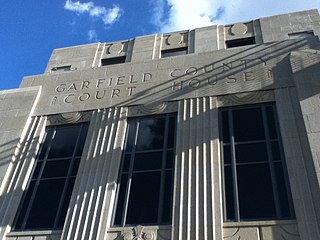
Hawk & Parr was an architectural firm in Oklahoma. It designed many buildings that are listed on the U.S. National Register of Historic Places. Its Mission/Spanish Revival style Casa Grande Hotel, for example, was built in 1928 and was listed on the National Register in 1995.

Keene & Simpson was an American architectural firm based in Kansas City, Missouri, and in practice from 1909 until 1980. The named partners were architects Arthur Samuel Keene FAIA (1875–1966) and Leslie Butler Simpson AIA (1885–1961). In 1955 it became Keene & Simpson & Murphy with the addition of John Thomas Murphy FAIA (1913–1999), who managed the firm until his retirement in 1980.
Walter T. Vahlberg was an architect based in Oklahoma. Several of his works are listed on the National Register of Historic Places (NRHP).
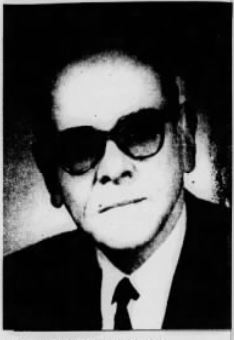
Leon Bishop Senter was an American architect who worked primarily in Oklahoma. Although not formally educated in architecture, he became Oklahoma's first licensed architect in 1925 and designed several buildings on the National Register of Historic Places.

Raymond J. Ashton (1887–1973) was an American architect in practice in Salt Lake City from 1919 until 1970. From 1943 to 1945 he was president of the American Institute of Architects.
References
- ↑ "Albert Ross" . Retrieved March 23, 2021.
- ↑ "NRHP Sugg Clinic". US National Park Service. Retrieved 6 August 2020.